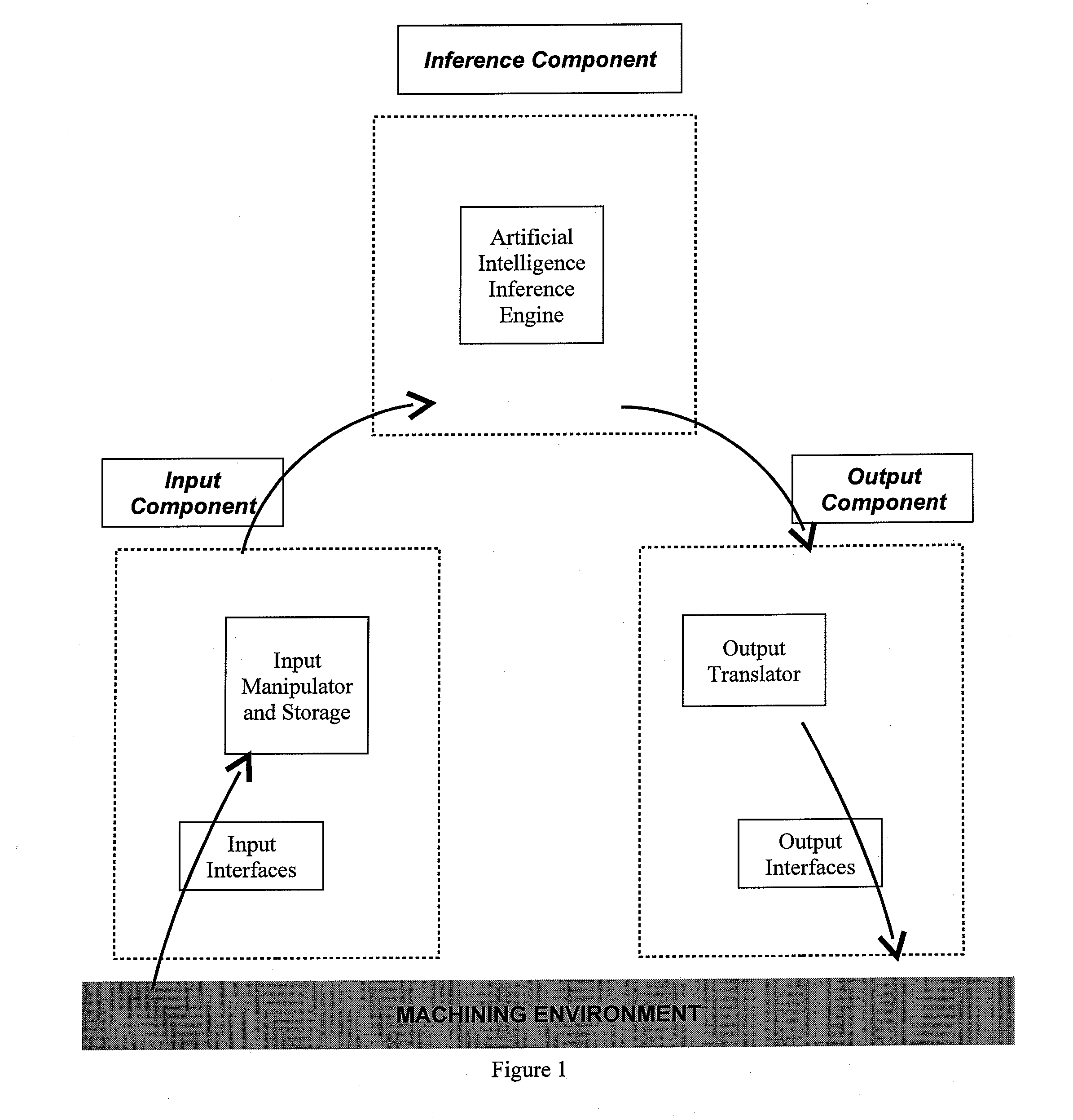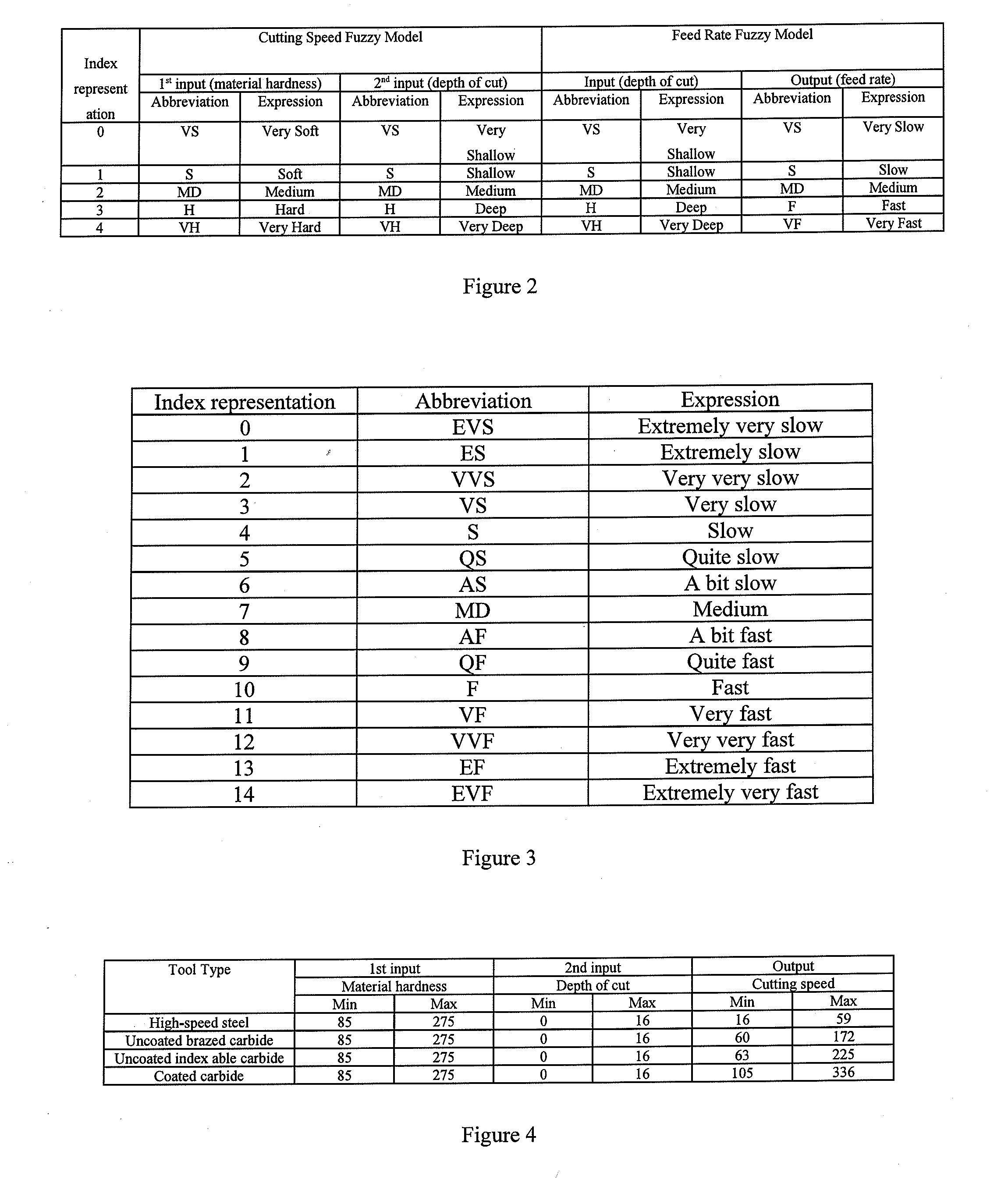Artificial intelligence device and corresponding methods for selecting machinability data
a technology of artificial intelligence and data, applied in the direction of inference methods, programme control, instruments, etc., can solve the problems of significantly affecting the overall manufacturing cost, no longer performing, and never defining precious machinability data in a scientific way, so as to achieve better solutions
- Summary
- Abstract
- Description
- Claims
- Application Information
AI Technical Summary
Benefits of technology
Problems solved by technology
Method used
Image
Examples
first embodiment
[0035]In the first embodiment, there are three basic components for a typical fuzzy expert system which are input fuzzification, rules application (or inference engine) and output defuzzification. The input fuzzification translates the system-input variables into universe of input memberships. There are two common methods used for an inference engine which are Max-Product method and Max-Min inference method. The difference is the aggregation of the rules. They use multiplication and truncation of the output fuzzy set with the yielded result respectively. The defuzzification process is defined as the conversion of a fuzzy quantity, represented by a membership function, to a crisp or precise quantity. There are two common methods for defuzzification of fuzzy quantities which are the Max method and Centroid method. Two separate models have been developed to yield the desired output for wrought carbon steel turning process; which are the Cutting Speed Fuzzy Model and the Feed Rate Fuzzy...
third embodiment
[0047]To tune the parameters of the membership functions optimally, the steepest descent method described in the invention is applied. Through this method, the system would be able to adapt to different environment settings. The system would adjust its weights to minimize the error between the predicted and the actual outputs during the training process.
[0048]The degradation level of the machine performance is predicted through another prediction model based on neural network (third embodiment). This model is characterized by the relationship between vibration and degradation of the machine; as well as the surface finish. Surface finishing is another vital element in determining machine degradation, with respect to machine vibration. Another model is realized through neural network (third embodiment) to predict the surface finish, characterized by the relationship between machine vibration and surface finishing.
second embodiment
[0049]In the second embodiment, the genetic optimization is used to further optimize the fuzzy rules. Major operations of genetic algorithm depend on random choice. A random number generator class is developed. It consists of three main functions.
[0050]They are: to generate a random real number from 0 to 1, to generate a random number from a user given start to a user given end integer value and to give green or red light for a user given probability.
[0051]Genetic optimization of fuzzy rules has been carried out with the help of an object oriented genetic optimization library (GOL). It consists of several useful and inter-connected classes. To evaluate the fuzzy result, the Fuzzy Set Handling (FSH) class has to be included. FIG. 13 shows a general system flow of the genetic optimization process for fuzzy rules design.
[0052]The population needs to be initialized. Information such as the number of alleles and the length of each allele are predetermined. The GOL use bit-wise interpreta...
PUM
 Login to View More
Login to View More Abstract
Description
Claims
Application Information
 Login to View More
Login to View More - R&D
- Intellectual Property
- Life Sciences
- Materials
- Tech Scout
- Unparalleled Data Quality
- Higher Quality Content
- 60% Fewer Hallucinations
Browse by: Latest US Patents, China's latest patents, Technical Efficacy Thesaurus, Application Domain, Technology Topic, Popular Technical Reports.
© 2025 PatSnap. All rights reserved.Legal|Privacy policy|Modern Slavery Act Transparency Statement|Sitemap|About US| Contact US: help@patsnap.com



